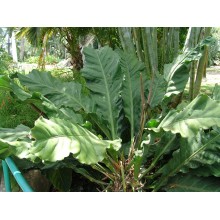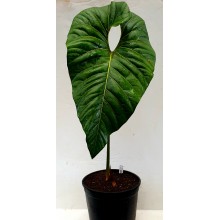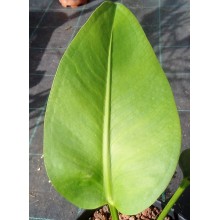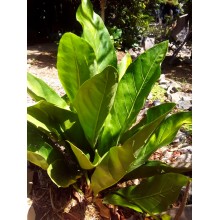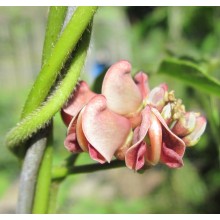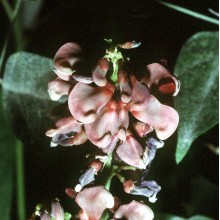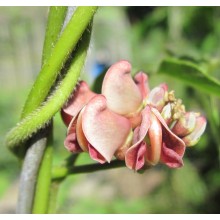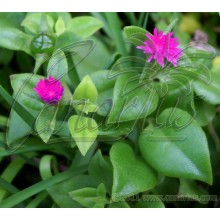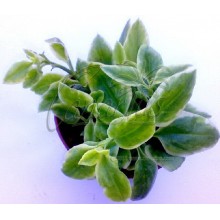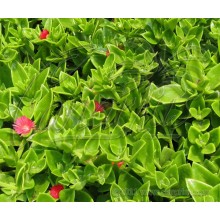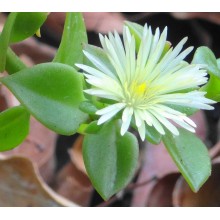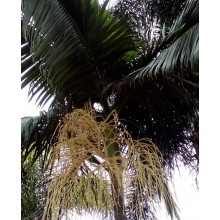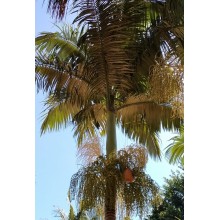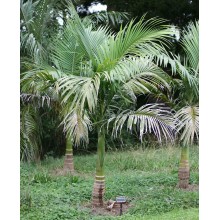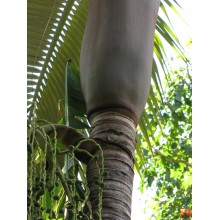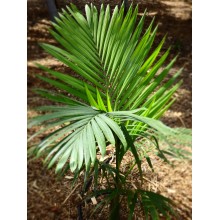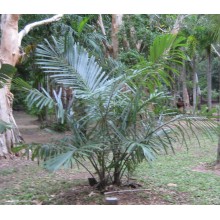Plantes générales Il y a 1882 produits.

Si vous aimez les plantes exotiques, vous venez au bon endroit. Canarius offre le dur-à-trouver des plantes exotiques qui sont rarement disponibles dans les centres de jardin. Notre magasin a des espèces naturelles ainsi que des hybrides rares. Nous offrons des plantes exotiques en provenance des Îles Canaries.
Les commandes sont envoyées partout en Europe et aussi dans le monde entier. Les colis seront atteindre votre maison dans quelques jours après l'expédition (mais nous avons aussi besoin de quelques jours pour le traitement). N'hésitez pas à nous contacter si vous avez des questions.
Sous-catégories
-
Succulentes
Les plantes les plus intéressantes habitent dans les déserts du monde et les zones sèches. Canarius propose une sélection croissante de plantes succulentes de qualité maximale, car elles sont cultivées à l'extérieur en plein soleil des Canaries.
Les succulentes ou «plantes grasses» sont des espèces de rétention d'eau, adaptées aux conditions sèches. Ils stockent succum (jus, eau) dans leurs feuilles, les tiges ou racines, et ils présentent souvent une apparence robuste et charnue.
-
Exotiques
Les plantes exotiques sont des espèces provenant de contrées éloignées, qui ne sont pas dans leur habitat naturel. Généralement, elles sont à caractère décoratif, elles disposent d’un feuillage dense avec des fleurs de couleur vive et ont une forme inhabituelle… Ci-après, vous pourrez découvrir une grande variété de plantes exotiques, allant des broméliacées, héliconies et palmiers aux plantes d’intérieur.
Les plantes exotiques n'ont pas forcément d'utilité particulière, les collectionneurs achètent ce genre de plantes avant tout pour leur rareté et pour décorer des espaces intérieurs ou en plein air, selon l’environnement.
-
Fruits, Herbes et Plantes Médicinales
Les Fruits, les Herbes et les Plantes Médicinales sont destinées à offrir une meilleure santé. Dans cette section, chaque type de plante offre des propriétés bienfaisantes, que ce soit des arbres fruitiers (le Feijoa, l’Ananas, le Fino de Jete, etc.) et des plantes pour la santé, telles que le Graviola, l’Aloe Vera, le Callisia fragrans, etc. Au sein du métabolisme normal des êtres vivants, l’organisme produit certaines substances à partir de nutriments latents dans l’environnement; certaines de ces réactions chimiques font partie du processus de toutes (ou presque) les espèces. Normalement, les composants utiles sont concentrés dans certaines parties: feuilles, graines, fleurs, etc. Découvrez quelle plante vous est recommandée et achetez-la en ligne!
-
Spécial
Sur canarius.com, nous essayons de repousser les limites du domaine de la botanique. Sur notre boutique en ligne, nous tentons de facilité le processus achat/vente des plantes partout dans le monde. C’est pourquoi, nous cultivons les espèces les plus communes ainsi que les plantes les plus spéciales, comme nous pouvons le voir dans cette section.
-
Anthurium crassinervium
Anthurium crassinervium
This "birdnest Anthurium" with glossy, wide and ruffled leaves can slowly grow to enormous proportions. As a house plant it is usually smaller.
46,00 € -
Anthurium decipiens
Anthurium decipiens
This giant-leaved aroid is considered a holy grial by those who love exotic foliage. It was called Anthurium salgarense until 2019, when it was split out of the species salgarense as it was described as a new species on its own.
285,00 € -
Anthurium maricense
Anthurium maricense
Small, elegant birdnest Anthurium with roundis thick leaves,15-30 cm long. It is endemic to a small coastal area close to Río de Janeiro, exposed to wind and drought. It is surprisingly hardy to cold and stood light frost in Mediterranean conditions.
46,20 € -
Anthurium schlechtendalii
Anthurium schlechtendalii
Extremely ornamental birdnest anthurium with nice dark purple inflorescences, followed by thick "tails" of glossy red fruits. It does well in pots or as an epiphytes, attaining 50-120 cm in height. It is mid-sized and goes well as an indoor plant.
58,90 € -
Anthurium wendlingeri
Anthurium wendlingeri
Truly exotic aroid with narrow and long, penduluous , dark leaves and an unusal corkscrew inflorescence.
68,00 € -
Apios americana 'Early Blooming'
Apios americana 'Early Blooming'
This is a early blooming cultivar of Groundnut or Hopniss. This "ancient crop", scientifically named Apios americana, belongs to the family of beans and actually grows much like a bean, but in its case the edible part is the tuberous root system hidden underground, which is delicious and high in protein.
18,30 € -
Apios americana 'Late Blooming'
Apios americana 'Late Blooming'
This is a late blooming cultivar of Groundnut or Hopniss. This "ancient crop", scientifically named Apios americana, belongs to the family of beans and actually grows much like a bean, but in its case the edible part is the tuberous root system hidden underground, which is delicious and high in protein.
18,30 € -
Apios americana 'Nutty'
Apios americana 'Nutty'
This is a nutty-tasting blooming cultivar of Groundnut or Hopniss. This "ancient crop", scientifically named Apios americana, belongs to the family of beans and actually grows much like a bean, but in its case the edible part is the tuberous root system hidden underground, which is delicious and high in protein.
18,30 € -
Aptenia cordifolia
Aptenia cordifolia
Four 14-20 cuttings - Creeping, fast growing groundcover mesemb with flowers in summer. This is the true A. cordifolia, with hearth-shaped leaves with bumpy surface and purple-pink flowers. It takes more cold than other aptenias.
11,00 € -
Aptenia cordifolia Variegata
Aptenia cordifolia Variegata
NEW ! - Branched plant. Delicate creeping succulent with cream and green foliage. Leaves are glossy, hearth-shaped and slightly succulent.
12,50 € -
Aptenia cordifolia x A. haeckeliana
Aptenia cordifolia x A. haeckeliana
Four 15-20 cm cuttings. Creeping, fast growing succulent plant with bright pink-red flowers in summer. This hybrid Aptenia is the perfect groundcover for gardens in coastal mediterranean climates. This is called Aptenia 'Red Apple' in the USA.
11,20 € -
Aptenia haeckeliana
Aptenia haeckeliana
Aptenias are excellent groundcover plants. They are creeping succulents, potentially evergrowing in the "mesemb" family: Aizoaceae. There are 4 species in the genus Aptenia and this A. haeckeliana is the beautiful one with the yellow flowers.
12,40 € -
Archontophoenix maxima
Archontophoenix maxima
Very elegant palm from Australia, with slender ringet trunk, topped by a showy bright green crownshaft.
32,50 € -
Archontophoenix myolaensis
Archontophoenix myolaensis
This species of Archontophoenix is native to a small area in the mountainous region west of Cairns in N.W. Queensland, found in a few locations in gallery forests following rivers. It is similar to the more common Archontophoenix cunninghamiana, with a slightly smaller size, a bluer crownshaft and some other minor differences.
42,00 € -
Archontophoenix purpurea
Archontophoenix purpurea
The showy, colourful crownshaft is the masterpiece of this elegant solitary palm from australia. A rainbow of purple, green and blue.
52,00 € -
Archontophoenix tuckeri
Archontophoenix tuckeri
Uncommon Archontophoenix species from Northern Australia. Leaves are silver underneath, somewhat pendulous or drooping. It is suited to coastal Mediterranean condition and it takes cool weather and short, light frosts.
28,60 € -
Areca catechu
Areca catechu
Areca catechu is a species of palm native to the Philippines cultivated for areca nuts. Medium-sized palm tree, growing straight to 20 m tall, with a trunk 10–15 cm in diameter. The leaves are 1.5–2 m long, pinnate, with numerous, crowded leaflets.
29,40 € -
Arenga australasica
Arenga australasica
Clumping feather palm from NE Australia, found mainly in coastal areas. Despite its tropical origin, it grows in colder climates.
72,00 €
Pour le moment, il ya peu de produits dans cette catégorie Plantes générales




















